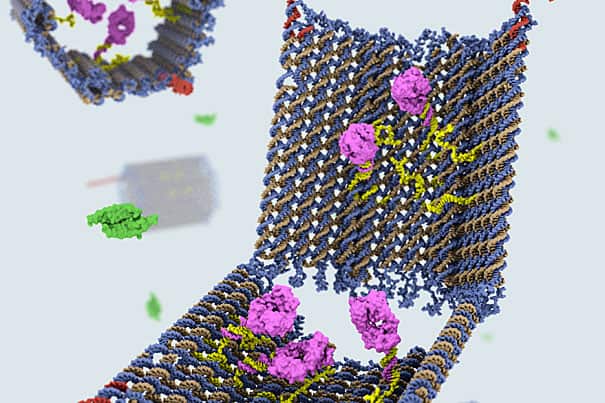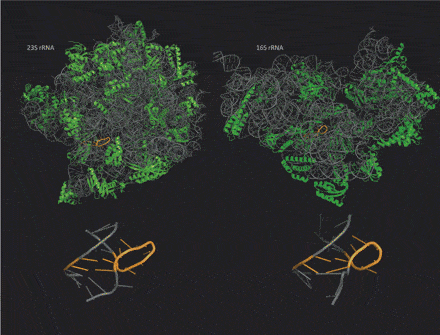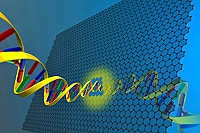Functioning DNA nanorobots to deliver specific molecular signals to cells were designed by combining DNA origami, DNA aptamers, and DNA logic gates.
DNA nanotechnology-based nanorobot delivers cell suicide message to cancer cells


Functioning DNA nanorobots to deliver specific molecular signals to cells were designed by combining DNA origami, DNA aptamers, and DNA logic gates.

New computational methods to explore the rapidly expanding collection of high resolution three-dimensional RNA structures reveal new RNA structural motifs, identifying additional building blocks for complex RNA nanostructures.
A set of machine learning programs can now predict properties of small organic molecules as accurately as can calculations based upon the Schrödinger equation, but in milliseconds rather than hours.

Artist’s conception of a nanopore drilled into a layer of graphene to speed up DNA sequencing. One of the greatest promises of near-term nanotechnoloogy is cheaper DNA sequencing to speed the development of personalized medicine. There are not only genetic differences between different patients, but also genetic differences between, for example, different cancers of the… Continue reading Nanotechnology, DNA sequencing, and personalized medicine
Researchers in Australia and the US have demonstrated a working transistor by placing of single atom of phosphorous with atomic precision between gates made of wires only a few phosphorous atoms wide. This demonstration points to possibly extending current computer technology to the atomic scale.

A field-effect tunneling transistor comprising a vertical heterostructure of atomically thin layers of graphene and boron nitride or molybdenum disulfide may pave the way for computer chips based on graphene nanotechnology.

Scientists at Kyoto University and the University of Oxford have combined DNA origami and DNA motors to take another step toward programmed artificial molecular assembly lines.
Foldit game players have again out-performed scientists in protein design, this time improving the design of a protein designed from scratch to catalyze Diels-Alder cycloadditions.
An array of 96 iron atoms on a copper nitride surface, assembled using an STM and used to write a byte, demonstrates how small magnetic storage could shrink and may lead to novel nanomaterials for quantum computers.
The first Master’s of Science in Nanomedicine degree program in US is announced. As an example of the rapidly developing potential of nanomedicine, a novel type of nanoparticle succeeded in two different mouse models in destroying a type of brain cancer that had previously been completely resistant to all treatment attempts.